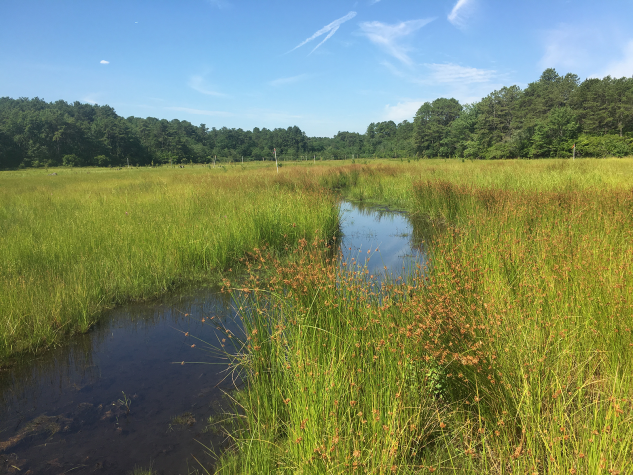by McKenzi Heger | September 17, 2019
Riparian buffers can benefit our environment in many ways. From preventing erosion to abating flood and storm damage and providing vital wildlife habitat, these vegetated riparian buffers are important to maintaining and improving water quality and overall system health.

According to the EPA, riparian areas “act as natural filters of nonpoint source pollutants, including sediment, nutrients, pathogens, and metals, to water bodies, such as rivers, streams, lakes and coastal waters.” They typically consist of trees, shrubs, and grass that are planted between croplands and surface water. Riparian buffers are meant to filter pollutants from entering streams and controlling erosion while providing beneficial nutrients and organisms that support stream and other aquatic habitat function.
So why are riparian buffers important? In short, they represent valuable protection against outside influences that degrade and impair stream and other aquatic systems. They also provide other tangible environmental benefits:
- Water Quality: Riparian buffers support good water quality by absorbing and filtering out nutrients and suspended sediments that impair quality and function, including animal waste, sediments, and pesticides. The effective filtering capacity of these buffers have been shown to reduce the amount of pollutants entering the water, thus improving sustainable quality land.
- Controls Erosion and Flooding: Riparian buffers help prevent erosion and sedimentation. These buffers stabilize streambanks and provide an area where the storm and flood energies can be effectively absorbed thus abating related damage. They also slow down the release of water from heavy rainfall, reducing the impact of flooding.
- Habitat for Wildlife: Riparian buffers provide shade, shelter, structure and food sources for a wide variety of aquatic and terrestrial species of wildlife. The buffer not only generates food sources from organic materials, but it also helps regulate the water temperature for the organisms living within the stream while providing natural debris that creates structure and additional food and energy sources.
How streams function is heavily based on the condition of their riparian buffers, the length and width, the variety of species comprising it, and how it is managed and maintained after it is established. There are different key points and steps to be cognizant of when seeking to restore riparian buffers, and all play an important role in supporting stream function. First, it is important to understand the existing spoil composition and amend, if needed, to prepare for the planting of native vegetation. The type, number, and configuration of native plants installed is of equal import to establishing the correct stability, structure and function. All plantings should be properly cared for until established to the point where they are self-maintaining.
After the buffers are planted, post-construction maintenance is essential in order to ensure that the restoration remains on the proper trajectory to self-maintenance. Controlling the re-establishment of non-native or invasive species is a very important part of post-construction maintenance. Fencing or tree shelters are an effective means of preventing herbivory of newly planted trees and shrubs. Lastly, some supplemental planting is typically required as part of the post-construction maintenance routine. This high level of care, particularly during the first two years following construction, are essential to helping the restored riparian buffers reach their full functionality.
GreenVest has a great deal of successful project experience in restoring riparian buffers. They have completed a wide-range set of projects, ranging anywhere from large scale, rural, modified agricultural restorations to complex, urban, and scarcity resource restoration. A few of these projects include the Mullica River Mitigation Bank and the Cranbury Mitigation Bank, which both currently hold available riparian zone credits.
To learn more about our participation in riparian buffers, contact us.



